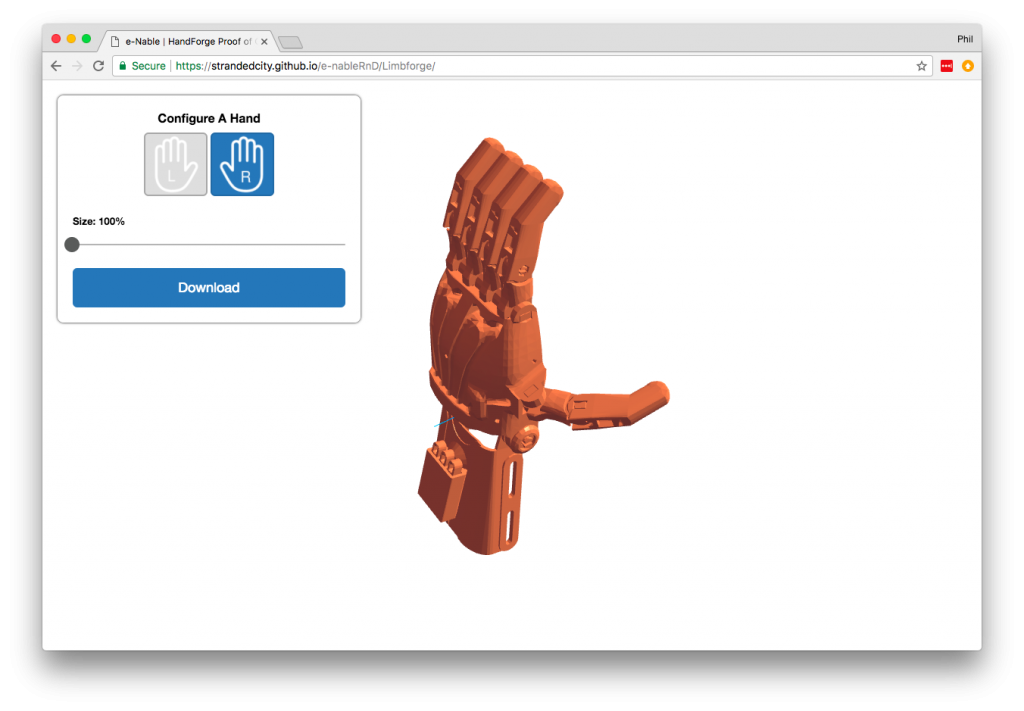Through associations while working at Pier 9 / Instructables, I became involved with a non-profit called the E-nable Community Foundation which provides low-cost 3D-Printed Prosthetics to those with limb differences. I was involved with the non-profit only for about a year until my son was born. During that time I provided the base proof-of-concept for their now-product, Limbforge, which enables browser-based configuration of the Printable Prosthetics.

Though I really only did a few night’s work for Limbforge, the technical architecture is what they still use today. Prior work had attempted to parameterize every model in code using OpenSCAD on the backend, but it created serious problems for the project:
- Prosthetics CAD Designers were unfamiliar with programming, so could not express their designs in code. Programmers were then required for even the smallest change to the models, which were complex.
- Generating each model on the fly was slow
- Visual feedback needed to be rendered before results could even be evaluated by the user
The new approach generated hundreds of “pre-baked” sets of parameters by scripting for Fusion 360, the CAD program in which models were originally parameterized. My work essentially became a 3d model viewer that allowed selection of parameters that would “choose” a file that already existed, and show it immediately.
Dates: 2015
Explorations: Changing technical approach from a prior iteration of the project. Zipping combinations of files and triggering the download entirely on the frontend.
Technologies: JavaScript (ThreeJS), Fusion 360 Scripting
Github: https://github.com/strandedcity/e-nableRnD/tree/master/Limbforge
Demo: Proof of Concept (this is buggy and incomplete, but working if you click-drag to rotate the model after selection)